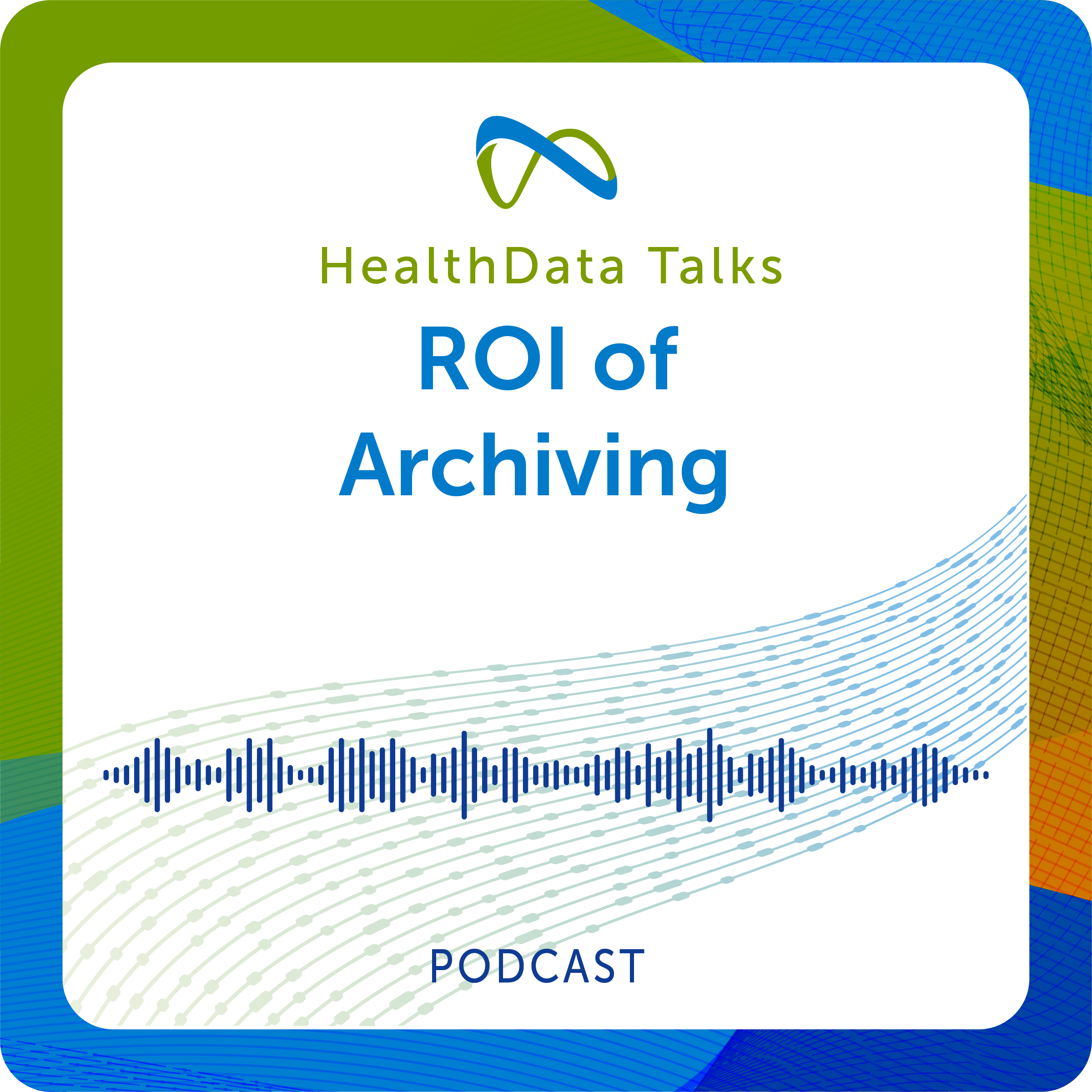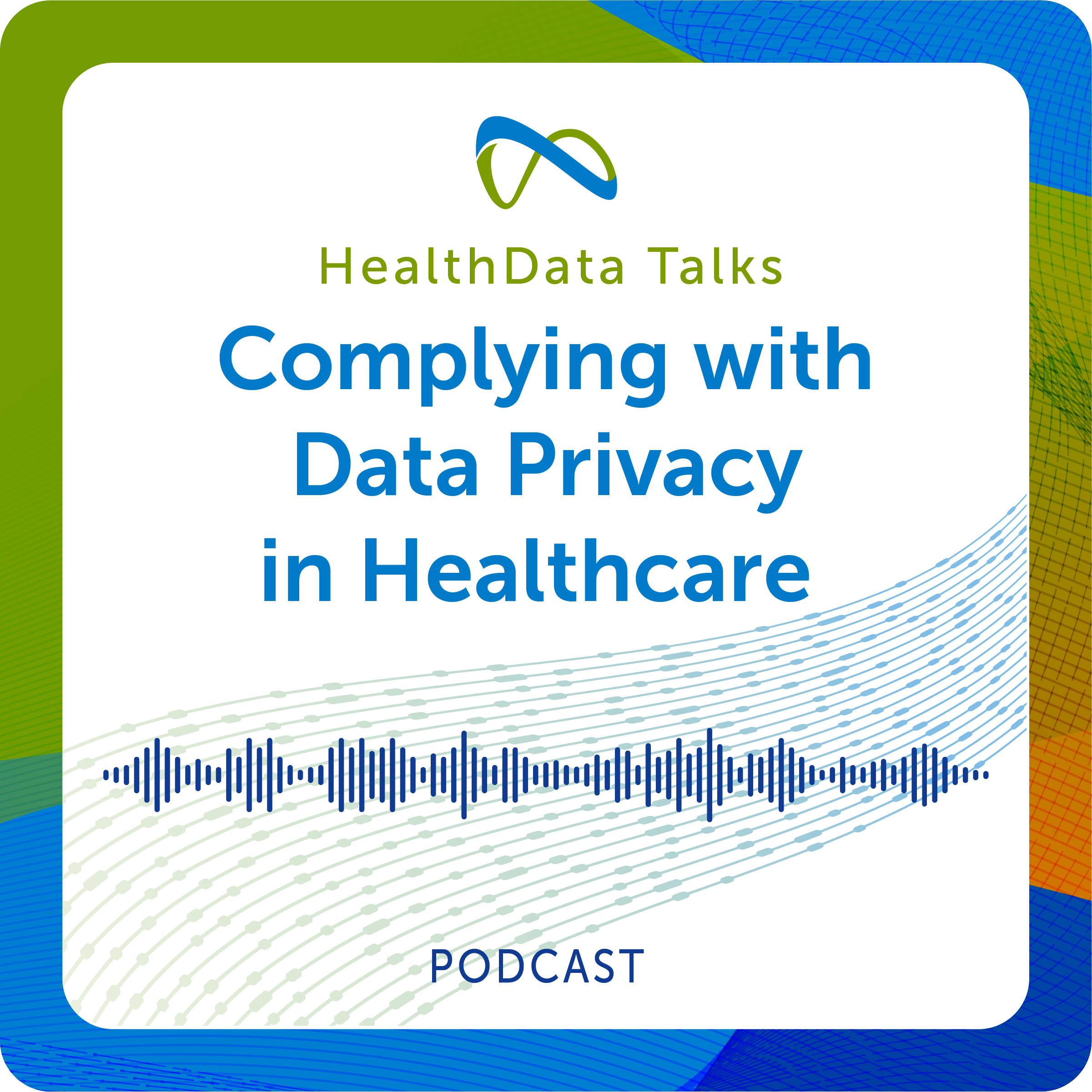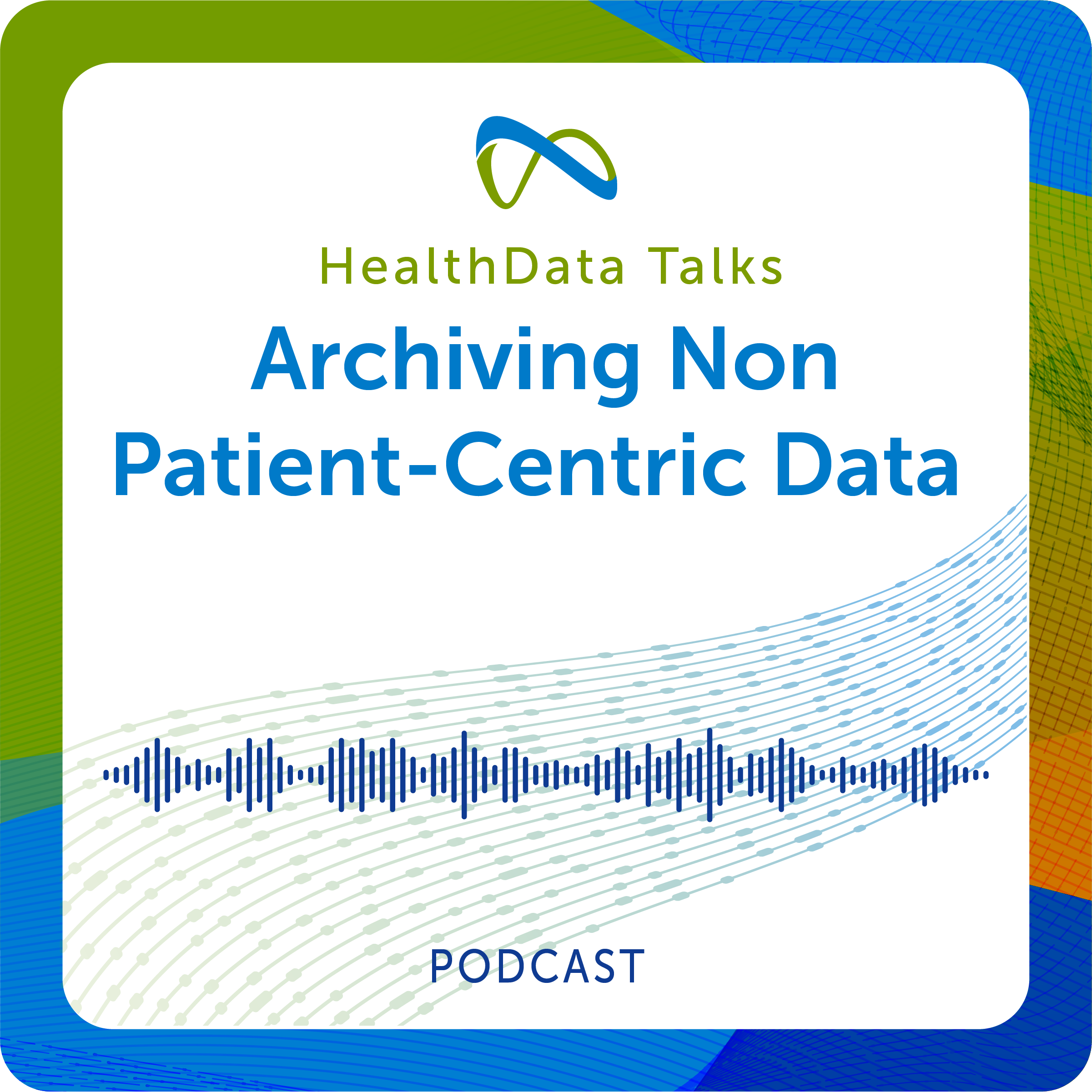Episode Transcript
[00:00:02] Speaker A: Welcome to Health Data Talks, where industry experts offer bite sized tips and trends for managing legacy data.
[00:00:12] Speaker B: My name is Eric Johnson. I'm the VP of Marketing here at Harmony Healthcare it.
Today I'm joined by Jim Hammer, our Chief Operating Officer and frequent guest to this podcast. So thanks Jim for joining us again on another edition of Health Data Talks.
Today we're really going to be talking about enterprise document management systems and we're going to talk a little bit about a shift in the market that we're starting to see in terms of the evolution of EPIC Gallery products and what this might mean for the market, how that alternative and solution offering means in terms of some of the technology changes and the data that's required to support that change.
And so with that we're going to dive into detail here a little bit, but first and foremost we'll just start at a little bit of a high level and talk about enterprise document management systems in general.
So first question, Jim, to you, maybe can you just talk a little bit about the notion of document management systems from a data management perspective? You know, what do they do, you know, what are some of those common brands that are out there that we frequently work with and what's the role that they play in terms of the data that they manage for health systems?
[00:01:38] Speaker C: Yeah, thanks Eric. And first up, I appreciate the opportunity again always good to talk about what we provide and offerings in the marketplace that we work with. And to your point, enterprise document management Systems are typically EDMs play a role in kind of niche purpose built functionality that usually integrate very deeply with Core Anchor, EHRs or other ERP systems as an example. So to your point, you know, Cerner Millennium, Oracle now used App Extender and some other solutions.
Usually Epic customers were tightly integrated with Highland, Onbase and now Epic's offering of their Gallery solution in the market. And really what those solutions offer is the ability to store, ingest, provide workflows around non structured documentation so folderizing, tagging, metadata as well as other discrete data around those non structured documents so users can find them and do their workflows efficiently around that where the EHR vendors typically or ERP vendors are focused on their core workflows and it's a best of breed situation. In that case, as we'll talk about Gallery, it's a little bit more now best of breed all integrated into the EPIC solution set which is pretty exciting in the marketplace.
[00:03:04] Speaker B: Thanks Jim, appreciate that that introduction. Can you talk a little bit about the kind of data that's being handled within these systems a little Bit and just kind of a level of detail. What exact data are some of these systems managing and how does that interact with the ERP system or EHR system in general?
[00:03:29] Speaker C: Sure.
As mentioned, usually these are non structured documents, so things like inbound faxing or loose documentation, if you will. So it could be a progress note that's not been created through the EHR itself, that's received referral documentation and just doesn't have to be patient centric data either. It could be other business units within an institution like hr, payroll, general finance. Really any documentation set that is like I said, not created or interfaced into the core workflow application lens of these ED solutions.
And again that can be inbound, you know, workflows, ingestion of data or you know, scanning and upload as an example is another item. And then the workflows outbound is really what that handles as well. So release the ability to create those new bundles of information that need to be sent to whatever the external parties might be or internal as well, as well as viewing capability integrated into the solutions that they're, they're being, you know, integrated with.
[00:04:36] Speaker B: Excellent. Thanks, Jim.
Clearly this is a fairly sophisticated system that has a pretty deep level of integration, you know, to multiple systems within an institution.
Maybe can you talk a little bit.
[00:04:54] Speaker C: About.
[00:04:56] Speaker B: In general if an organization is considering moving from one platform to another?
Maybe if could you talk about what's that process like? Right. And the level of effort, sophistication, complexity that's involved in that type of consideration, moving from one clinical documentation management system to another.
[00:05:24] Speaker C: Yeah, absolutely.
I'll start out with, as you know, the relationship between EPIC and HILA nonbase, you know, matured over the years. We provided and created kind of a center of excellence of really anything migration to the EPIC platform and that included their third party partnership with Hyland OnBase. So our teams created some automation significantly around the ability to do consulting services, mapping of document categories, an example, as well as the ingestion of the document set into OnBase.
We've created an API for that work to make that seamless. So usually that performed by an analyst or several, depending on the volume of data, especially during the early onboarding of migration to EPIC as an example. So we have really good expertise, deep expertise around that Solution going to OnBase. Conversely, we now have that same expertise flowing from Onbase to Gallery at the present time. Galleries really focusing on the patient centered documentation.
Other departments or non patient centered is really not being focused on, at least not being released yet to the market. Understanding that's coming.
So right now for net new customers to Epic, we're assisting with a lot of data migrations, both discrete data to the ehr, but then also document ingestion and mapping services from the original source applications that are being rationalized to Epic in helping place those documents within the Gallery solution as an example. So we've got expertise kind of both directions and can help with, like I said, really turnkey solutions for planning, mapping, consulting and actually the actual technical work to make that happen.
[00:07:17] Speaker B: Excellent, thanks.
As we've seen with Epic and a number of, you know, different types of technology categories over the years, you know, once Epic decides to heavily invest in a particular vertical or platform and functionality, you know, they, they typically go all in in ensuring that they're able to offer, you know, that type of solution to their customers.
So with that and the evolution of Gallery, where it certainly appears that Epic is heavily invested in offering full capability functionality with Gallery, can you just talk a little bit about what that means to Epic customers? What does that mean to the market? Right. What does that mean to the best of breed companies that are out there in terms of, you know, what they might do and maybe just talk a little bit about what does that mean for companies like Harmony that can help support, you know, this process for customers that are starting to look at Gallery as an alternative?
[00:08:30] Speaker C: Yeah, I think, great question.
I would say, you know, through the customers we're working with, kind of the early adopters for Gallery and really kind of the focal point of a lot of Epic customers. As soon as Epic offers something within their suite of solutions, they really plan to make a move to that. Just again, having one vendor as an integrated stack makes a lot of sense.
Again, they know their workflows for the EHR side, you know, obviously they've created benefits and that integration will only get tighter for any solutions that they add on.
Recently there was the ambient noise information to the market.
We see this very similar to that as an example.
So a lot of the customers that we're talking about already assisting are really eager to make the switch and we've got positive feedback through that. But I would say it falls into that category. Eric.
[00:09:33] Speaker B: Yeah, makes sense.
It's a little bit of a tale as old as time when it comes to, you know, once Epic decides to move into a technology category, they're fully invested and certainly provides a lot of value for customers that want that offering at a economical price, if you will.
So with that for, you know, customers that you, you mentioned where we're starting to Assist them with their move to gallery.
Perhaps we could talk a little bit about what does that look like in terms of the approach that we would take and how do we work with those customers, you know, kind of at the implementation level.
Could you talk a little bit about our process and approach to that and the way we would, you know, we approach a project in this regard and what customers might expect in terms of the way that we would assist them in this type of migration kind of initiative?
[00:10:36] Speaker C: Yeah, absolutely. So like most projects, first we start with discovery. So what's the goal in this case? If we're gonna move hylonon based documents over to gallery, we'll sit down and look at what the footprint is and what the data categories and document types are that are stored and data sizing as well, and build a strategy of what, what the end goal is should all documents flow over to gallery. If it's a combined data migration and archival customer for us, we may delineate, you know, certain documents flow to galleries. An example and a different subset goes within the archive as an example, will help with data mapping around the document types. So in a lot of cases, folks that have been on EPIC or stood up on base quite a few years ago, they might have done some things differently if they could start over as an example. So we can help with translating, you know, maybe 1,000 document types, comes down to 500 as an example, just simple example.
So really implementation planning of what that looks like.
And then once we, once we engage in the actual work, it will help obtain the data for improvement base. And then typically that's a bulk gets data move for a first time load. And then again, as I mentioned earlier, we have some APIs that we can allow for the transfer of data kind of real time. So as we get closer to a cutover, we use that API to allow for the data transfer without having to have gaps in time for that data delivery so that the go live date for gallery is achieved as everybody wants it to be.
And then basically that data flows in. So we've got ingestion analysts that are certified, you know, with epic, you know, certification to be able to help with that process.
And then we do that side by side with our customer and epic, our partners to make that a successful project.
[00:12:30] Speaker B: Excellent, excellent. Thanks, Jim.
So for customers out there that are considering, you know, possible move, what should they do next?
[00:12:41] Speaker C: Yeah, great question, Eric. So I would say it's still early in the, you know, the adoption phase, if you will, pilot sites now, you know, net new customers to our understanding are kind of onboarding into the gallery, you know, product with Epic.
So first off, I would say for if you're an Epic customer, discuss it with your BFF at Epic. They're going to have the detail and what, what is available, what's coming, timelines, things like that. And then once, once a decision is made that this is the path we want to go, certainly reach out to our team and we're happy to plug in where needed. And again, we work very closely with our Epic implementation teams to understand what the timeline goals are for you as a customer, and then we'll adapt to make sure that that happens.
So like I said, I first reach out to the bff, understand what the product offering is, does the feature set meet what you have in terms of requirements and, you know, they'll help with the onboarding process of what that looks like and how that, that how that would be implemented from their side.
[00:13:47] Speaker B: Excellent.
Well, thanks Jim, for joining again our podcast. We certainly appreciate it and look forward to having you as a guest another time here soon.
[00:13:59] Speaker C: Appreciate it, Eric. Thanks so much.
[00:14:01] Speaker B: Thank you.
[00:14:03] Speaker A: That's it for this session of Health Data Talks. Check out helpful resources at Harmony H it. Com and follow us in your favorite podcast app to catch future episodes. We'll see you next time.


